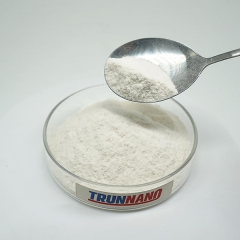Technical Parameters of Powdered Instant Sodium Silicate (CAS 1344-09-8)
(Technical Parameters of Powdered Instant Sodium Silicate (CAS 1344-09-8))
Keep in mind: We can likewise tailor salt silicate powder with moduli of 2.45, 2.5, and 3.4 according to your requirements.
Our Range of Sodium Silicate Moduli
We offer powdered immediate sodium silicate with moduli varying from 2.0 to 3.3. In addition, we can personalize salt silicate powder with moduli of 2.45, 2.5, and 3.4 to fulfill your particular requirements.
Intro
With a growing worldwide emphasis on environmental protection and lasting growth, sodium silicate, additionally called water glass or soluble glass, has garnered considerable passion in various industries owing to its varied uses. This inorganic substance serves as an important component in building, papermaking, and detergent manufacturing. Just recently, typical phosphorus-based detergent ingredients such as sodium tripolyphosphate (STPP) have actually been progressively gotten rid of due to their unfavorable impacts on water ecological communities. In this context, the requirement for efficient and eco safe options has ended up being urgent. Sodium silicate, with its one-of-a-kind attributes, has entered the spotlight as a promising option.
Market Opportunities
1. International Demand Patterns
The worldwide production of focused artificial cleaning agents has actually seen stable development, specifically with the rising share of ultra-concentrated powders. It is approximated that a minimum of 230,000 lots of sodium silicate were required in 2000 alone to fulfill market demand. Provided the current restricted global supply, there is a substantial space between supply and need, indicating substantial possibility for growth. As consumers’ need for high-quality and environmentally friendly items increases, the marketplace for salt silicate is expected to increase even more.
2. International Competitive Landscape
Compared to comparable items generated worldwide, Chinese-manufactured sodium silicate commonly supplies a much more affordable price and comparable or perhaps premium top quality. For example, the FOB cost of salt silicate in the United States is about $51.15 per 100 pounds, while costs in Europe are even higher. This price advantage settings Chinese manufacturers strongly in the worldwide market. By continually innovating and boosting product high quality, Chinese producers have the potential to capture a bigger share of the international market.
Overview of Sodium Silicate
Sodium silicate is a substance created from silicon dioxide (SiO ₂) and salt oxide (Na ₂ O), typically stood for by the formula Na ₂ O · nSiO ₂, where n varies relying on the specific kind. It is characterized by good solubility, a high pH degree, and superb cleansing residential or commercial properties, making it an excellent detergent additive. Beyond its usage in detergents, sodium silicate is widely utilized in the building industry, such as in waterproofing materials and sealants. In the paper market, it boosts the toughness and smoothness of paper. Furthermore, it discovers applications in textile dyeing, oil extraction, and various other fields.
Production Process
1. Raw Material Prep work: The preliminary action includes choosing appropriate basic materials, consisting of silica sand or soluble glass, along with caustic soft drink.
2. Dissolution Stage: The raw products are blended and heated to a proper temperature to assist in dissolution, making sure detailed blending of all elements.
3. Formation Control: Details problems are controlled to promote the formation of preferred crystal structures in the service. Temperature level and stress specifications need to be precisely taken care of throughout this stage.
4. Filtering and Filtration: To ensure the purity of the final salt silicate product, a plate and frame filter press is used to remove undesirable dampness and impurities.
5. Drying and Creating: Spray drying out modern technology is used to lower the moisture material better, causing a powder kind that is very easy to store and transport.
Cost-Benefit Analysis
From an economic perspective, the manufacturing of sodium silicate provides clear expense advantages. For a plant with an annual capacity of 5,000 lots, the expense break down is as follows:
1. Variable Costs: About $346.71 per load, including resources (silica sand/soluble glass and caustic soft drink), energy consumption (electrical power and gas), and labor expenses.
2. Fixed Expenses: Around $141,400 every year, covering devaluation of fixed properties, upkeep, management charges, funding rate of interest, and other expenditures.
3. Overall Prices: The combined complete expense is estimated at $385.71 per heap.
4. Sales Revenue: With an estimated asking price of $642.86 per bunch, the earnings margin per heap would certainly be approximately $257.15.
( sodium silicate)
5. Economic Perks: The project might produce an annual profits of around $3.21 million, contributing approximately $1.29 million in tax earnings.
This cost-benefit analysis shows that sodium silicate not only offers considerable technological advantages but is likewise highly economically feasible. For manufacturing firms, investing in the production and promotion of salt silicate can generate significant financial returns while boosting their company social obligation picture.
Conclusion
In summary, salt silicate, with its remarkable technological efficiency and low manufacturing costs, holds excellent possible as a replacement for traditional phosphorus-based additives. Due to progressively stringent environmental laws and the expanding customer need for high-grade, eco-friendly products, accelerating the research study, development, and commercialization of salt silicate will certainly be an essential motorist in the change of the worldwide cleaning agent market. For investors, entering this field not just contributes to corporate social duty but also promises eye-catching financial returns and social advantages. With ongoing technological innovations and a broadening market, the potential uses salt silicate are considerable and benefit additional investigation and growth by industry stakeholders and research bodies.
TRUNNANO is a supplier of Sodium Silicate Materials with over 12 years of experience in nano-building energy conservation and nanotechnology development. It accepts payment via Credit Card, T/T, West Union and Paypal. Trunnano will ship the goods to customers overseas through FedEx, DHL, by air, or by sea. If you want to know more about cas 1344 09 08, please feel free to contact us and send an inquiry(sales5@nanotrun.com).
All articles and pictures are from the Internet. If there are any copyright issues, please contact us in time to delete.
Inquiry us

